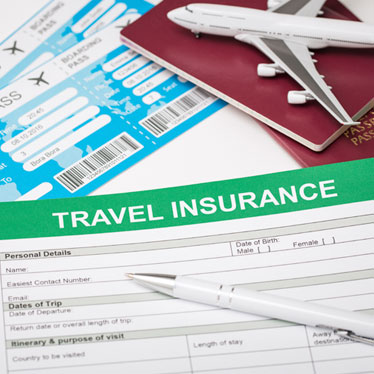7 Tips For Traveling With Your Instrument

Whether you're headed on vacation or away for a music school audition, traveling with an instrument requires proactive planning. While en route – via plane, train or automobile – your instrument is more susceptible to damage, theft/vandalism, or just plain "getting lost" in the shuffle.
Performing due diligence in advance ensures you and your instrument arrive safe and sound at your final destination.
1. Get Instrument Insurance
Instruments are expensive, particularly when you begin upgrading. Instrument insurance is a real thing, and an affordable way to protect your instrument investment. Read, Benefits of Having Insurance For My String Instrument, and, Where do I Get Instrument Insurance?, for more information on the topic.
2. Visit the Department of Transportation Website
The government dedicates a whole section of its Department of Transportation (DOT) website to Traveling With a Musical Instrument, the majority of which covers how to observe proper protocol when flying on the airlines. Take time to read their page. It has plenty of helpful tips (much of which we'll cover below), as well as instructions on how to file a formal complaint with DOT. It will facilitate the process should your instrument encounter an accident or loss of some kind and the airline or relevant travel agency doesn't respond or is ineffective.
3. Invest in a Travel-Worthy Case
A proper case is your instrument's first line of defense from damage of any kind. Often, beginning musicians use old or used cases, which are not built as well as modern versions, and are more prone to falling apart or losing a handle in the hustle and bustle of hurried travel. When traveling, you should always use a hard case, even if it means having to borrow one for now.
If you're dedicated enough to practice on vacation, it's a sign you're ready to invest in a travel-worthy instrument case. Today's cases are built of stronger, yet lighter, well-insulated, and weather-proof materials. They're also designed with innovative spaces to store accessories such as tuners, rosin, metronomes, cleaning tools, humidification kits, etc.
Revelle is one of the leading manufacturer's of high-tech violin cases, all available for a reasonable price – particularly when you consider the repair and replacement costs for the instrument inside. One of our favorites is the CrossTECH Violin Case, specifically designed to protect violins on the go. If you plan on doing much travel with your instrument, you'll never regret spending a little extra to invest in a case that's worthy of the job.
4. Loosen the Strings
Whether you're traveling by car, train or plane - temperature and humidity levels are bound to fluctuate. Releasing tension on the strings, as well as your bow, will protect them and the neck of your instrument from damage/warping.
5. Travel By Air
Here are some quick tips when traveling by air:
- Contact the specific airline ahead of time to learn more about their policies and procedures. Regulations vary from airline to airline, so never assume anything.
- Don't assume your instrument is considered hand-luggage, or carry-on, unless you've confirmed it (preferably in writing) by the airline ahead of time.
- If you want to carry-on your cello or bass, you'll need to purchase an additional seat, and permission to do so should also be in writing from the airline.
- If you'll be checking your instrument, use an ample supply of "Fragile" stickers on the case's exterior, that include your contact information. Airport employees are less likely to be rough or careless since the red stickers stand out.
- Photograph everything so you have visual proof of your instrument and accessories' condition, and for proof of what was inside, in case you do need to fill-out a claims form.
6. Travel by Train
The best rule-of-thumb is never leave your instrument unattended. It's difficult to lug instruments into the train bathroom or dining car, so if you're traveling alone it's almost always better to check anything larger than a viola or guitar to protect it.
Similarly, larger instruments may require their "own ticketed seat" if you don't want to check them. Contact the train line ahead of time to learn more about their policies to plan accordingly.
7. Travel by Car
The most important thing to remember when traveling by car is to always lock the car if the instrument is inside and to never leave an instrument(s) inside the car for long stretches of time. This leaves instruments prone to extreme temperature and humidity fluctuations, as well as direct sunlight exposure.
When creating your travel plans, take time to make travel plans for you instrument as well, to keep it safe, sound, and in your possession when you arrive at your final destination.


